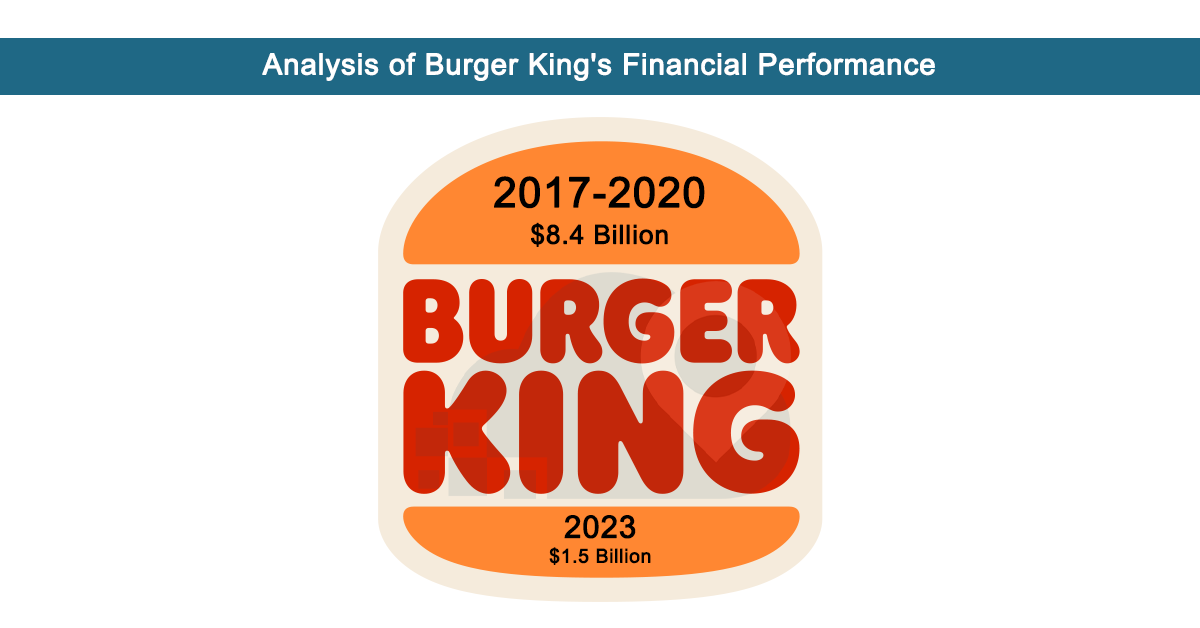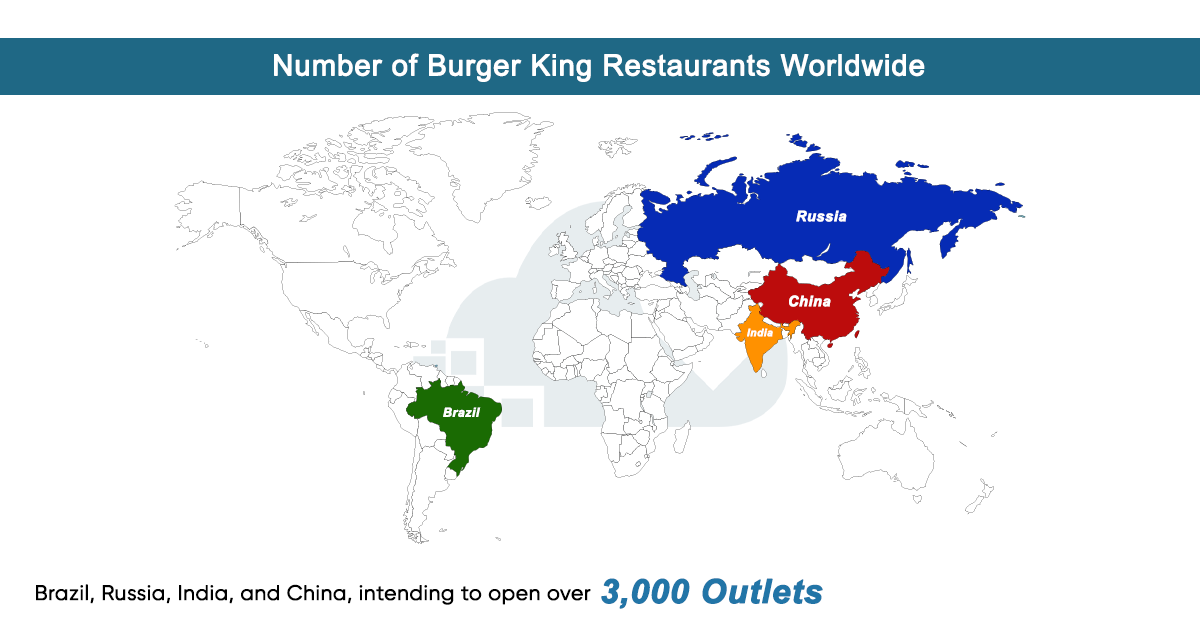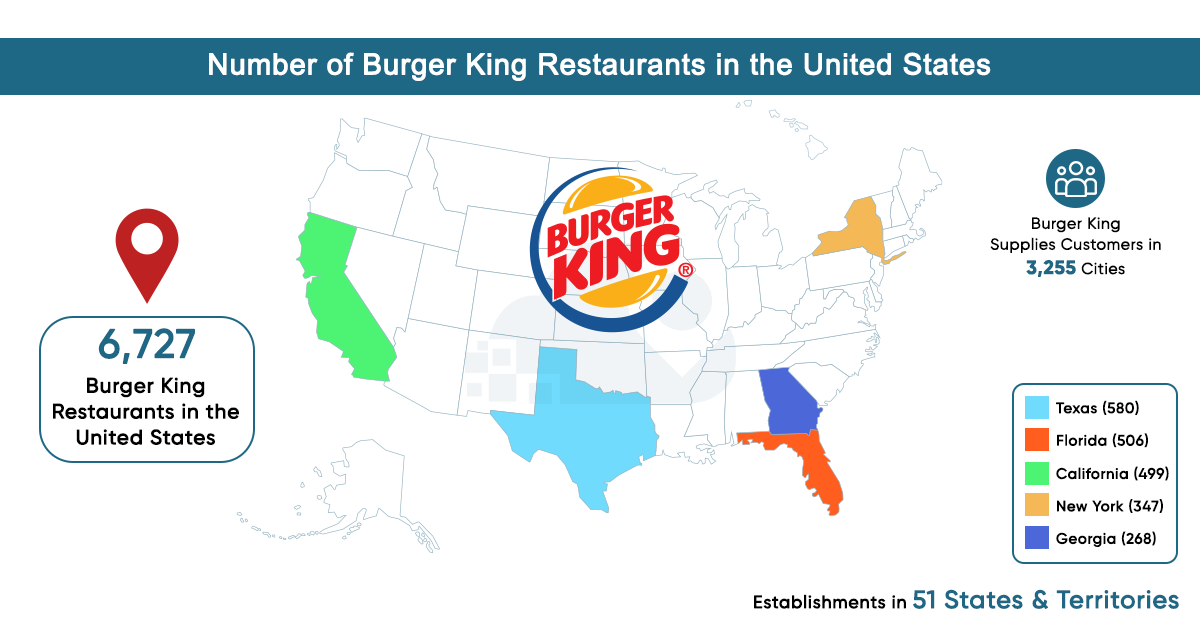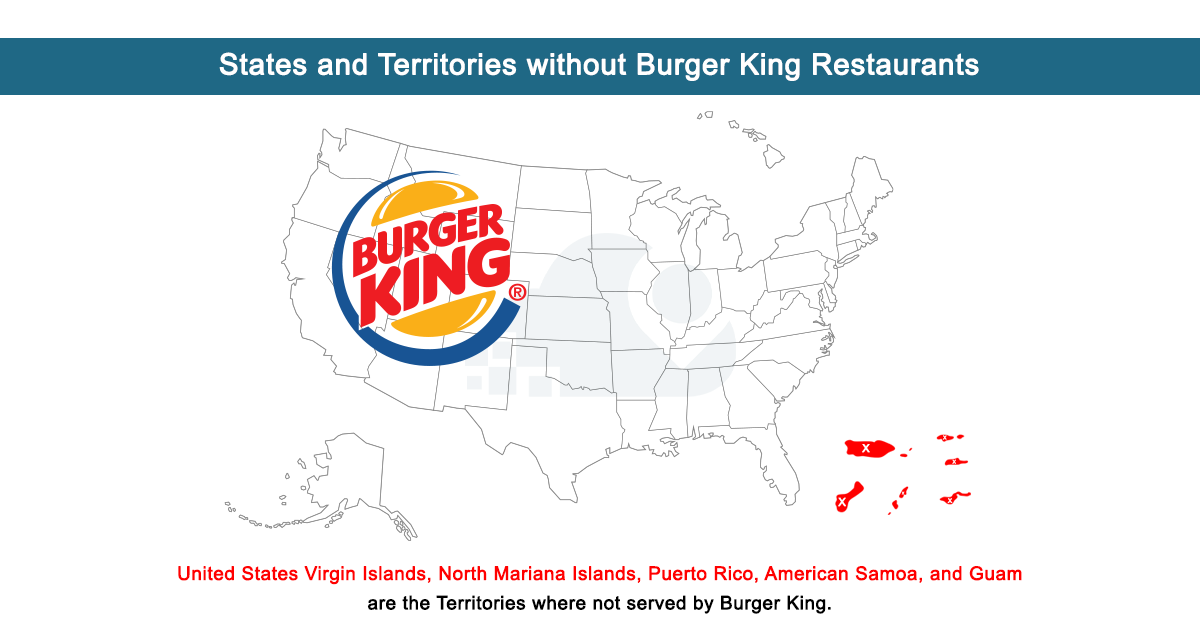
Burger King Corporation (BK) is an American chain of fast food restaurants known for their hamburgers. The company is based in Miami-Dade County, Florida. It started in 1953 in Jacksonville, Florida, as Insta-Burger King. However, when Insta-Burger King faced financial problems, two franchisees from Miami, David Edgerton and James McLamore, bought the company in 1959 and renamed it “Burger King.”
Over the next 50 years, Burger King changed owners four times. In 2002, TPG Capital, Bain Capital, and Goldman Sachs Capital Partners took the company public. Then, in late 2010, a Brazilian company called 3G Capital bought a majority stake in Burger King for $3.26 billion. 3G Capital reorganized the company to improve its performance. Later, 3G Capital and Berkshire Hathaway merged Burger King with the Canadian doughnut chain Tim Hortons, creating a new parent company called Restaurant Brands International, based in Canada.
Growth and Expansion
Burger King Corporation is a global fast-food restaurant firm that mainly sells flame-broiled hamburgers. Positioned as the second largest burger-selling enterprise in the United States, only after McDonald’s, Burger King is one of the most successful brand stories in the history of fast food. Burger King is one of the most recognizable and beloved burger franchise brands globally, boasting approximately 19,000 restaurants across various countries. Despite this extensive presence, there remains significant potential for growth.
Burger King India is one of the country’s fastest-growing international quick-service restaurant (QSR) brands. It reached 200 restaurants in just five years and now operates 268 locations in 17 states. The company holds exclusive rights to operate Burger King franchises across India until December 2039, with a favorable royalty fee capped at 5% of sales.
One of the specific financial objectives is reducing expenses, which allows the company to offer products at lower prices by buying large volumes and avoiding mistakes. Furthermore, the aspects mentioned earlier set Burger King apart from rivals in terms of vertical dimensions, including specific advertisements and brand image. The kit name “Be Your Way” reassures customers that the chain offers choices suitable to their tastes. In addition, Burger King has flame-grilled burger patties as its key feature and a policy of free refills on drinks.
The growth strategy identified at Burger King includes intensive market growth, and the company expands into global markets where it has not traveled before. The cost leadership approach is even more critical while operating in emerging markets because the company takes the first step in gaining market share through a competitive pricing strategy. Together with these approaches, the company wants to occupy a dominant market position internationally, expanding its presence throughout the country.
Burger King’s Global Presence and Growth
Expansion and Financial Performance
Despite reducing the number of company-operated restaurants, Burger King has steadily increased its total number of locations since 2009. The Florida-based company’s global expansion has increased its brand worth to over six billion U.S. dollars, making it one of the most valuable fast-service businesses. Corresponding to the increase in locations, Burger King’s revenue has also grown over the past four years, following a period of decline. However, the coronavirus (COVID-19) pandemic impacted the company’s operations, leading to a revenue drop in 2020 compared to the previous year.
Customer Satisfaction
Throughout the changes in location numbers and revenue, Burger King’s customer satisfaction score has remained relatively stable. According to the American Customer Satisfaction Index (ACSI), Burger King scored 75 out of 100 points in 2022, which only slightly decreased from the previous year’s score of 76 points.
Future Projections of Burger King
Burger King Owner Aims for $60 Billion in Global Sales by 2028
Restaurant Brands International, which owns Burger King, intends to attain $60 billion in global sales by 2028. This target is realistic and reflects the company’s belief in its molder’s growth plan and market opportunities.
With franchising, Burger King has designed a system of growth that involves the franchising model as one of its pillars. Burger King franchising benefits the company because it allows it to open many outlets quickly with little capital investment since it will involve contracting with local businessmen. This particular model has been helpful in the expansion to new markets and in coping with different business climates. Franchises are useful in the Master company because they bring the consumers and reputation while at the same time gaining the support and knowledge that the market and resources of Burger King can provide the franchise partner. This symbiotic arrangement has been one of the significant factors for the company’s expansion at the international level.
Digitalization is another vital phenomenon that has influenced the growth of Burger King as an organization. The company has embarked on a digitalization strategy, adopting many mobile applications, online ordering, and delivery services. These innovations are intended to improve customer service and cater to society’s needs with increasing technological demand. Since incorporating the solutions, Burger King has ensured its customers more convenience while at the same time reaping vital data to enhance the company strategies and overall functions in other geographic locations.
Both sustainability and menu localization are critical success factors for Burger King at the global level. Another factor that is gaining significance in the worldwide market is corporate responsibility, namely using only fresh products, controlling the origin of all ingredients, minimizing production waste, etc. Furthermore, Burger King wisely adjusts its food offerings to customers’ preferences and regulatory requirements worldwide. Burger King is a worldwide brand with the potential to grow and extend further, especially when combined with corporate social responsibility towards the environment.
Steady Comparable Sales Growth
To achieve this goal, Restaurant Brands International estimates that comparable sales would have to increase at an average rate of 3% or more annually until 2028. The upward trend, which constitutes the constant annual growth rate, reveals satisfactory results among current restaurants, which is a significant driver of the company’s growth strategy.
Long-Term Guidance Provided
It should be noted that RBI revealed long-term financial forecasts for the first time, proving that the company is financially responsible and capable of creating a solid long-term vision. These projections, therefore, help the company explain to the investors and stakeholders the expected growth and operation in the following few years.
Strategic Initiatives
To support these ambitious sales targets, Burger King plans to focus on several strategic initiatives:
- Global Expansion: Expansion of the number of Burger King outlets globally, and especially in countries with high growth characteristics.
- Franchise Development: Ongoing franchising of company-owned restaurants, growing through franchising to increase the number of outlets and efficiency.
- Menu Innovation: Expanding customers’ choices with new products and new items on the menu that might be popular among customers.
- Digital Transformation: Increasing and refining physical distribution available from online sales and delivery service to meet the needs of clients and increase sales.
- Marketing and Branding: Increasing marketing communication to improve brand awareness and brand identity internationally.
- Commitment to Customer Satisfaction: However, expansion and revenue increase are the primary objectives of the company’s development. Burger King continues to adhere to the principles of customer satisfaction. Performance is constantly tracked using the ACSI, hence the company’s continued focus on quality and service delivery.
Through these long-term objectives, Restaurant Brands International has an opportunity and intention to consolidate the Burger King chain as the world’s leading QSR and achieve considerable financial targets by 2028 in line with the specified goals of its strategic development.
Through these long-term objectives, Restaurant Brands International has an opportunity and intention to consolidate the Burger King chain as the world’s leading QSR and achieve considerable financial targets by 2028 in line with the specified goals of its strategic development.
Analysis of Burger King’s Financial Performance

Burger King India offers various vegetarian and non-vegetarian options at different prices to cater to a broad customer base. From fiscal year 2017 to 2020, its revenue grew at an impressive compound annual growth rate (CAGR) of 54.1%, reaching Rs 8.4 billion.
The world-renowned fast food chain Burger King reported $1.3 billion in revenue from its global operations for the 2023 financial year. The bulk of this revenue, amounting to $1.2 billion, was generated from its franchise and property segment. In contrast, sales revenue for the same period was nearly $100 million. Burger King is a subsidiary of Restaurant Brands International, a multinational quick-service holdings company.
Number of Burger King Restaurants Worldwide

Currently, Burger King operates in most parts of the Western Hemisphere, Europe, and East Asia. One of the most essential three-letter acronyms for the company’s development during the years to come is the BRIC, an abbreviation for Brazil, Russia, India, and China, intending to open over 3,000 outlets in three countries. Since the 1990s, the global fast-food chain has continued to have a base of operations in US military installations, including those of the U. S Army and U.S. Air Force through the Army Air Force Exchange Service. Today, Burger King is present in almost all military and air force installations because its concessionaires are limited to only a few chains, such as Burger King, Taco Bell, Popeyes, and Subway.
Burger King owns and franchises or SOPs more than 18,700 restaurants in over 100 countries and the United States territories. This goes a long way in explaining the increased internationalization of the brand’s image.
A significant proportion of Burger King outlets are franchises, most owned and managed by individual franchisees. A franchisee is a person/organization who operates the Burger King outlets and sells food using the Burger King name and business format to pay initial and/or yearly fees. Most of them are household units operating Burger King outlets for several years, sometimes for more than ten years. This indicates a certain level of stability and loyalty among franchise operators as they are willing to invest in the business in the long run.
This highlights Burger King’s significant international presence and the franchise-owned model food chain networks in which most of its outlets are operated independently by franchisees with experience with the Burger King brand. Based on the analysis, the United States has the highest number of store locations and has a vast potential for expansion as compared to any other country or state.
Number of Burger King restaurants in the United States in 2024

These establishments in 51 states and territories verify the fast-food chain’s vast network coverage. Moreover, Burger King supplies customers in 3,255 cities, showing diverse coverage of city and non-city areas.
According to the Burger King Company’s latest statistics, there are 6,727 Burger King restaurants in the United States by April 23, 2024. Texas emerged as the leading state with 580 Burger Kings; it was home to 9% of all the restaurants that Burger King had across the country.
Regions with the Highest Number of Burger King Restaurants
The data on the number of Burger King restaurants in the top states and territories show how deeply the chain’s network is integrated into the United States. Most Burger King restaurants are located in different states in the USA and equally distributed in complex urban and suburban areas. Common areas of placement involve locations near important highways, shopping sprees, and busy cross-sections where there is usually much action on the pedestrian side.
Therefore, the firm has more outlets in specific states such as Texas, Florida, California, and New York because these are big states with many people and sprawling cities. However, Burger King restaurants are not restricted to these states only. Those are present in all the states of the USA, both for the local population and tourists. This wide distribution is a plus for customers wishing to access their menu and service delivery within any region in the United States of America.
In Texas alone, there are 580 Burger King stores, representing about 9% of Burger King outlets in the United States. This means that there is one restaurant for every 49,993 people in the state.
Florida has 506 Burger King restaurants, which occupy 8% of Burger King’s franchises worldwide. This means the per capita food establishment ratio is one restaurant for every 42,447 Florida residents.
California has 499 Burger King outlets, which is still 7% of the total Burger King restaurants in the US. This makes the ratio of people per restaurant to be 79,182 people to one restaurant in California.
Statistics for New York show that it has 347 restaurants, which is 5% of the total number; the restaurant occupancy per head of the population is 56,058. Ohio has 289 restaurants, which is 4% of the total number, while each person per restaurant has 40,449 on average. Illinois and Pennsylvania together account for about 4% of the restaurant chains, with Illinois possessing 273 chains (1 restaurant per 46,420 citizens) and Pennsylvania 270 chains (1 per 47,407 citizens).
Another state, Georgia, has 268 restaurants and one restaurant per 39,627 people, representing 4% of all restaurants. Michigan’s 246 restaurants constitute 4% of the total, equating to one per 40,610 people. Finally, North Carolina rounds out the top ten with 233 locations, which is 3% of the total, serving one restaurant per 45,010 residents.
States and Territories without Burger King Restaurants

It is important to note that some states and territories in the US are not served by Burger King at all. These include the United States Virgin Islands, North Mariana Islands, Puerto Rico, American Samoa, and Guam. Nevertheless, Burger King has extensive coverage in many states and territories in the United States. To the best of my knowledge, these specific areas do not have Burger King outlets.
Such a situation may be due to differences in market saturation and geographical coverage, which might depend on several factors, including market demand within the territories, the feasibility of transporting and distributing the products, and the economic viability of the areas of interest. Burger King’s expansion strategy depends on strategic planning, market assessment, and achieving the highest profitability levels in viable markets.
There can be several reasons for the absence of Burger King restaurants in some territories. One primary factor could be the level of market demand, as evidenced by Burger King’s strategy of targeting areas that boast high demand for fast foods and a high population of the intended clientele. Business strategy is also relevant as they target populated urban and suburban locations for high consumer traffic that would guarantee them profits. The aggression from other fast food or local restaurants could also play a role, especially if the area has many food outlets. Also, characteristics like real estate availability, leasing costs, and stringencies of regulations and operational conditions can hinder the formation of new places.
Growth Scope of Burger King
Burger King has adopted intensive growth strategies mainly based on increasing the market share. This requires the continuation of rollout across existing and new markets, the strength of the franchise business concept, and the improvement of digital and delivery options. These strategies help the company acquire more customers and respond to changing market conditions; hence, the company’s growth is sustained.
Another advantage of Burger King is its brand awareness and association with a well-established burger called the Whopper. This burger is regarded as the favorite of many burger lovers in the big burger QSR segment. This popularity is further supported by qualities such as flame grilling and the ability to modify orders to suit guests’ desires.
Burger King has also incurred important financial commitments to increase restaurant franchising and attempt to modernize the company’s image in the United States; this has involved the purchase of Carrols Restaurant Group as well as an effective plan for Burger King to modernize fully and then refranchise nearly 1,000 restaurants in the next five to seven years.
Conclusion
In general, it can be stated that the use of both competitive and growth strategies lies at the foundation of the success of the Burger King Corporation on the international level. Besides expanding in the market, this activity of focusing on cost control and new menu development further consolidates the company’s position in the global fast food sector. Hence, competitive strategies are a significant success factor that has seen Burger King become one of the world’s leading fast food providers. Organizational growth strategies are also a considerable face to the company’s globalization. Bringing out Burger King’s competitive strategy and intensive growth map in equal measure, Burger King has realized good amiable competitive returns and global expansion regardless of the various identified Five Forces competition threats.


